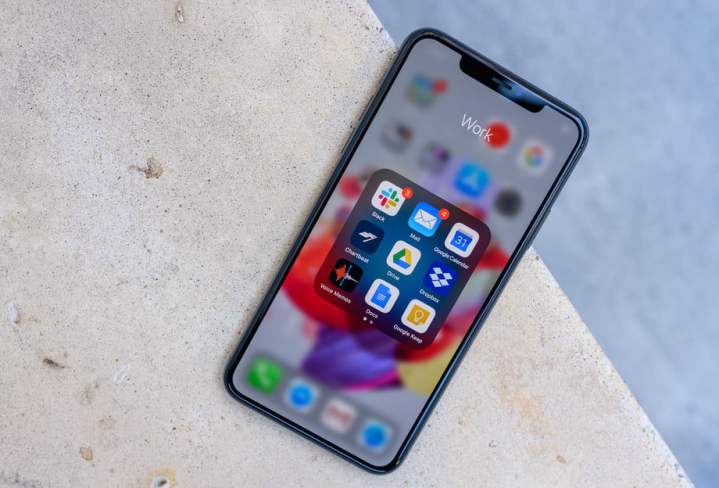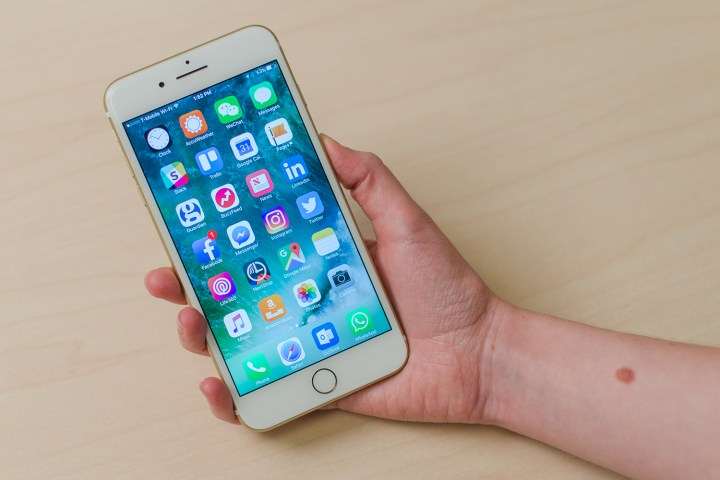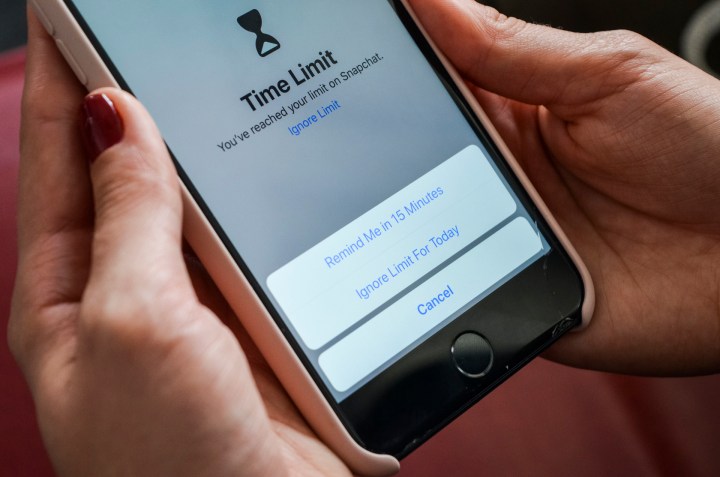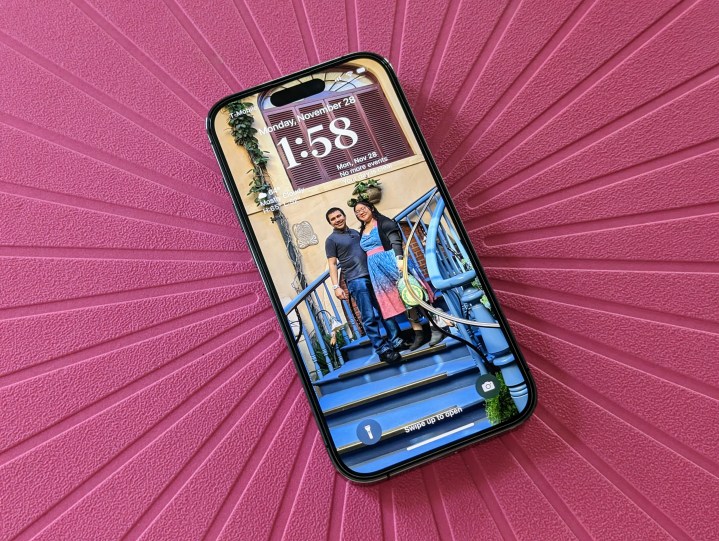In 2007, Steve Jobs introduced the iPhone on the stage at Macworld Expo in San Francisco. It has been 16 years since that announcement that changed the mobile industry as we know it; today, we now have 16 versions of iOS software that power our iPhones.
iOS has certainly come a long way, with iOS 16 letting us do things on our iPhone 14 that we never thought was possible a decade ago. But each version of iOS has its own strengths and weaknesses, with some releases being better than others.
Here’s a look at every version of iOS, ranked from worst to best.
16. iOS 7

When iOS first started, it was called iPhone OS, and it was very heavy on skeuomorphism — the concept of making digital items represent their real-world counterparts. iOS 7 eliminated the skeuomorphism that Apple used for years and instead introduced a completely flat design interface that was a nightmare in terms of usability. It also lacked the charm and delight of previous iOS versions.
And it wasn’t just the flat, lifeless design. iOS 7 switched over to a new, lighter Helvetica typeface that was harder to read, and it was not always obvious what were actual buttons or not since there was only text.
Though iOS 7 set the precedent for boring, flat design everywhere, it did give us the first iteration of Control Center, which is an ever-useful iOS utility. With a simple swipe up from the bottom of the screen, we had quick access to Wi-Fi, Bluetooth, airplane mode, and other frequently accessed settings.
15. iOS 11

iOS 11 brought with it a lot of great new features: notifications were able to be displayed on the lock screen (after merging Notification Center with the lock screen), Control Center was redesigned to be more streamlined on a single page, Apple gave us the Files app, screen recording, basic drag-and-drop features, and more.
But it was also notoriously buggy and had a lot of issues. For example, there was a very weird and specific bug in iOS 11.1.2 that made your iPhone crash on December 2 at 12:15 a.m. This was patched, of course, but still, a very odd bug that spread like wildfire among the tech news blogs. Battery life was also severely impacted once an iPhone was updated to iOS 11. Another bug was discovered in iOS 11.2, which did fix the date bug, but then added another bug for HomeKit users by rendering access to your HomeKit lights and appliances would not work.
Though it did add some useful new features, iOS 11 was ridiculed because of its never-ending problems. It was definitely one of the buggiest releases of iOS ever — hence it is one of the worst iOS versions to date.
14. iOS 6

iOS 6 was the last skeuomorphic-designed iOS that would grace our iPhone screens. It was a release that was more about refining the previous iOS 5, but it did add some big changes that would pave the way for the future of iOS: Passbook (which eventually becomes Wallet), Do Not Disturb, and it replaced the native Google Maps app with its own in-house solution: Apple Maps.
Apple Maps was an absolute mess that tainted the otherwise decent release of iOS 6. Though Apple Maps was using a vector-based engine that allowed for smoother scrolling and it allowed turn-by-turn directions for the very first time, there were countless other problems with Apple Maps. The issues pretty much revolved around incomplete or inaccurate data for landmarks, like completely missing cities and towns, obscured satellite images, locations that looked like they were out in the middle of the ocean, roads that didn’t exist, and more.
The launch of iOS 6 and Apple Maps was so bad that Tim Cook, who was CEO of Apple at that time, had to issue a statement on the Apple website, apologizing for the “frustrating caused by the Maps application.” Scott Forstall, who was Vice President of iOS software engineering at the time of the iOS 6 launch, did not want to sign his name in a letter apologizing for the shortcomings of the new Apple Maps service, and as a result, was fired.
The legacy of Forstall’s disastrous Maps launch will always be what iOS 6 is known for, unfortunately.
13. iOS 13

iOS 13 introduced systemwide dark mode, Sign in with Apple, support for external storage with USB drives, street view in Maps, new ways to handle location data, swipe typing on the keyboard, and more. I personally love iOS 13 because dark mode is always on for me, and I can’t go back to light mode. But there were also problems.
It’s pretty evident that while Apple’s slogan is “it just works,” there are quite a few times when it just doesn’t. iOS 13 is one of those buggier releases — the first public release of iOS 13 wasn’t even the 13.0 version, it was iOS 13.1. That’s because there were bugs that weren’t fixed yet before the iPhone 11 lineup was out in the wild.
And even when Apple released updates for iOS 13 to fix bugs, the update would just introduce new bugs. Some of these were battery drain issues, others were constantly dropping calls, ringtones weren’t working as intended, and more. The problems kept coming because of frequent updates. While everything was eventually patched up as it should be, those early days of iOS 13 were rough.
12. iOS 10

iOS 10 added more interoperability to the platform, which allowed apps to communicate with one another. Basically, you could send information and data from one app directly to another without skipping a beat. For example, creating a collage in one app and then sending it straight to Instagram to share with your friends.
Another major feature that was built upon interoperability was the Universal Clipboard, allowing you to copy text or even an image on an iPhone, and then having the ability to paste that on a different Apple device, such as an iPad or Mac. For those who use nothing but Apple devices, this became a vital part of many workflows, including my own. You could even start launching apps with Siri, Apple’s digital assistant, so you could open certain apps just by using your voice.
This was the start of the ability to delete stock applications that you never use, like Stocks and Music. iOS 10 also gave us the iMessage Store, which focused on stickers, but this was overall confusing to navigate in the first iteration (as you could only find it above the keyboard in the Messages app). Also, while they’re still around today, iMessage stickers and other things like games really took off.
On top of all that, the overall aesthetic of iOS was starting to get a little stale, as there hadn’t been any major change to the overall design since iOS 7. We wouldn’t call iOS 10 an outright awful update, but it was more mixed than the other releases below.
11. iOS 5

iOS 5 is a pretty important release. Why? It was the first one to integrate Siri into the OS itself after Apple acquired Siri, Inc. in 2010. Even if you don’t use Siri a lot yourself, having Siri fused with iOS is an integral part of iOS today, as you can do voice-controlled tasks, get turn-by-turn directions, activate HomeKit accessories, and more.
Notification Center also made its debut in iOS 5, as well as activating your new iPhone or iPad wirelessly without having to plug it into iTunes. This was the start of the “PC Free” campaign, where Apple wanted you to rely less on a computer in order to use the iPhone and iPad. To add to the wireless theme, iCloud was also introduced, letting you save photos and other files in the cloud and being able to access them on other devices.
10. iOS 9

iOS 9 is one of my personal favorite versions of iOS because it brought Low Power Mode, which is a feature that I depend on in a lot of situations when I’m away from a charger. In fact, Low Power Mode is something I frequently have on while I’m spending the day at Disneyland, and I’m so thankful that it exists, all because of iOS 9. Otherwise, my iPhone 14 Pro may already be dead halfway through the day, and I’d be even more reliant on battery packs.
But Low Power Mode isn’t the only thing iOS 19 added. On the iPad, iOS 9 finally gave us the ability to do picture-in-picture video, letting you watch a video in a minimized window while in a different app. This sets the precedent for PiP in the future, which is always useful.
While these are the major changes in iOS 9, Apple did bring some improved features to other native apps as well. Notes let you sketch using different tools, insert images, and more. Apple Maps got transit support, and the Apple News app pulled in articles from various sources.
On older devices, like the iPhone 6s and 6s Plus, 3D Touch was added in iOS 9, which brought up a contextual menu with additional actions when you pressed slightly harder on app icons. This was actually one of my favorite features, and I’m very sad that Apple got rid of it in favor of Haptic Touch (which honestly just isn’t as good). 3D Touch was an amazing yet underrated feature that should have stuck around longer.
This was one of the iOS versions that was more about refining what already existed, which explains why there weren’t a lot of brand-new features. But what was already there from iOS 8 just got better with iOS 9.
9. iOS 12

The predecessor to iOS 12, which was iOS 11, was simply one of the worst releases of iOS ever. Thankfully, iOS 12 did not repeat the same mistake — instead, it fixed a lot of the performance issues that came from iOS 11 and made iOS stable again.
But there was more to iOS 12 than just making iOS functional. It gave us grouped notifications, Screen Time, and Shortcuts. Before grouped notifications, all of your notifications showed up as individual notification cards, and if you got a lot of them, it became a giant list that was nearly impossible to manage. Although grouped notifications still weren’t as good as the way Android handles notifications, it was a good first step towards a better iOS notification system.
Shortcuts were the big one of the new features, however. This app was previously called Workflow before Apple bought it. With Shortcuts, users are able to create automated actions that could launch apps or do certain app-specific features by command, and even with Siri. This sets the stage for later versions of iOS.
8. iOS 8

For anyone who is heavily vested in the Apple ecosystem, iOS 8 was one of the most significant releases. This was the first release of iOS that implemented a programming interface for communication between apps, and it also was the first to introduce Continuity with other Apple devices.
Why was this significant? It’s the first stepping stone to what I previously mentioned with iOS 10, making multiple apps communicate together. And Continuity took it a step further by letting you do things like answer phone calls and send SMS messages right from your Mac and iPad. Handoff was an extension of Continuity that allowed you to begin a task on one device and pick up right where you left off on another device. For example, you could be looking at a web page in mobile Safari, and then quickly open up that exact page on Safari on Mac. This was a big game-changing feature for those who work exclusively on Apple devices.
Other features of iOS 8 include third-party keyboards, Apple Pay in the U.S., QuickType (word prediction), HomeKit, the launch of Apple Music, iCloud Drive, Family Sharing, widgets in the Notification Center, and more. While iOS 7 was a big disappointment, iOS 8 was a great comeback for the platform.
7. iOS 3
Though this was only the third version of iOS, it’s hard to deny its overall impact, despite its simplicity. This was the iOS version that finally added copy and paste to iOS, a feature that was missing from day one and many criticized Apple for leaving out.
In addition, iOS 3 also added Spotlight, making searching for specific information on the device easier. The Messages app also finally supported MMS, video recording capabilities came with the iPhone 3GS, and the home screen could accommodate 11 pages, which means a total of 180 apps.
In retrospect, iOS 3 was a simple update, but definitely one with a profound impact on the future of iOS.
6. iOS 4

Technically the first version of iOS as we know it, as the first three versions were under the “iPhone OS” moniker that has been dropped.
In iOS 4, Apple introduced folders on the home screen, which increased the number of apps that you could have displayed on your device. This was also the first time you could use a custom wallpaper, as previous versions of iOS only let you use wallpapers provided by Apple. It’s easy to forget that at some point long ago, you couldn’t set your own favorite photographic memories as wallpaper. Imagine the horror!
This was also the first version of iOS that allowed for multitasking. With iOS 4, for the first time, you could put a phone call in the background while using other apps at the same time, and this also applied to location and audio playback. The app switcher was also added, letting users quickly switch between apps, putting the non-active app in an “inactive” state to save their place. And on top of all that, iOS 4 gave us FaceTime and Game Center.
5. iOS 16

The most recent release, iOS 16, brings major changes to the lock screen. When you pick up your iPhone, the lock screen is the first thing you see, so this is a big deal. With iOS 16, Apple has finally let us customize the lock screen, at least to an extent.
With the new lock screen customization options, you can apply filters to your chosen wallpaper image, change the typeface and font color of the date and time, and even add glanceable widgets. It’s all very similar to how you choose an Apple Watch face, from the way you access it from the lock screen to the complication-like widgets.
While I love the ability to change up how the lock screen looks, the interface for doing so is incredibly cumbersome and annoying. When you add a new lock screen, once you’re done with it, you’ll also have to choose a wallpaper for your home screen … for some reason. The default option is to turn your lock screen wallpaper into a pair, with the home screen blurred to be less distracting. But you can’t save the new lock screen without either setting it as a pair or choosing another home screen wallpaper, even if you don’t want to.
There’s plenty to improve with the lock screen UI, but just having these features at all is still fantastic. And there’s other good stuff in iOS 16! Live Activities gives us notifications that act more like widgets that provide real-time updates from apps, though apps that support the feature continue to be on a slow rollout. Messages now allow for edits and even undo sending. iOS 16 also brings back the battery percentage indicator, can lift subjects from the background in photos and turn them into stickers, adds haptic keyboard feedback, multi-stop routing in Maps, and more.
4. iOS 1
Officially called iPhone Software when it launched alongside the first iPhone in 2007, this is where it all began. Even though it’s incredibly rudimentary compared to what we can do on our iPhones now, there’s no doubt that iOS 1 is what rocked the mobile market when Steve Jobs announced it on stage at Macworld on January 9, 2007.
The simplest version of iOS, everything just worked as it should. In a world with cell phones that were clunky with buttons, a 3.5-inch screen that you manipulate with nothing but your fingers was revolutionary. Once you tried it for yourself, it was hard to go back to a Nokia, LG, or BlackBerry.
For the first time, it was a literal computer at your fingertips, which you could stuff into your pocket. The iPod was an app, you could get directions with Google Maps, and you had a full web browser, all in one. Oh, and you could make calls and send texts too.
Looking back, it’s as simple as they come, but this is what changed the mobile landscape as we know it — not just with the future of the iPhone, but with Android and Windows devices as well.
3. iOS 2
As great as iOS 1 was, it was limited because you only had the native apps from Apple, with the other option being web apps, which worked well enough for the time. But all of that changed with iOS 2.
With iOS 2, Apple launched the App Store, which opened up the floodgates for what was possible with the iPhone. Though the App Store started with simple apps and games, it was an entirely new way to keep someone entertained with the iPhone. There were apps for pretty much anything, too, hence the “there’s an app for that” slogan that became popular. From mobile-optimized games to utilities and productivity apps to photo editors — the App Store had it all, and it changed how we use our iPhones.
While the App Store and the SDK was the main star of iOS 2, there were other big additions as well. Improvements were made to the native Mail app that made it possible to add Microsoft Exchange email accounts, which is a big deal for businesses. There was even a GPS option added to the native Google Maps app.
Needless to say, if iOS 2 did not bring these features, then iOS — and the mobile landscape as a whole — would be very different.
2. iOS 15

A quieter release, iOS 15 was all about streamlining the base that iOS 14 built. While this means fewer big changes to iOS as a whole, there were fewer issues to deal with, and it was a pretty stable release.
Though I say it was a tamer release, that doesn’t mean that there weren’t any improvements. iOS 15 brought Focus modes, which is basically Do Not Disturb cranked up to 11. You can set a Focus for work to be rid of distractions, another for when you want to watch videos or play games, another set for when you’re working out, and more. Focus was (and still is) a little annoying to set up, but once you do, it works pretty well when you only want your iPhone or iPad to do a certain thing, and not everything.
Apple also opened up FaceTime a bit to compete with other video conferencing software, like Zoom. Though FaceTime isn’t available on other platforms, you could now invite non-Apple users to FaceTime calls with a web link. There were also other improvements like Portrait mode for FaceTime, Spatial Audio, and more. SharePlay was also a feature added in iOS 15, finally allowing others to share compatible content to others, such as streaming video or music.
1. iOS 14

Out of all of the iOS versions released so far, iOS 14 has been one of the best. Why? This was the first time that Apple finally made huge changes to the home screen, which has been stagnant for 13 years. Aside from a grid of app icons, the last big change was app folders in iOS 4. So, when Apple announced that the home screen could finally get widgets in iOS 14, it was a big deal.
But that wasn’t the only big change. Apple finally let us customize our home screens further with custom app icons, albeit through the Shortcuts app, which launched in iOS 12. Even though the process isn’t the most simple, this is the first time you could customize app icons without having to jailbreak your device. In fact, the home screen customization in iOS 14 went viral because of the “aesthetic AF” trend on TikTok — it was the first time average people could change up their home screens to whatever they wanted. Again, a huge deal, though Apple could (and should) simplify the process in the future.
iOS 14 also added the app library, which was a new way to search for and manage your apps. Picture-in-picture video finally came to the iPhone, you could change your default email and web browser apps, you could pin and do inline replies in Messages, access improved privacy settings, and more.
iOS 14 was simply one of the best versions of iOS that Apple has released, and we’re still waiting for another iOS release that can top this one.



